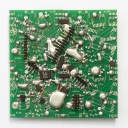@4poksy A standard sequencer is probably a few dozen instructions to the cpu and even the early rpi can do ~2000 MFLOPS, pd can get a great deal done between audio blocks despite its single thread nature. Has your experience demonstrated that you even need to worry about this? Even my 230k patch which is an entire programming language can accomplish a great deal between audio blocks and it can control all of the parameters for a good number of analog style subtractive voices in real time without issue. Sure my computer is a considerably more performant than a pi but still, it is getting a hell of a lot done between audio blocks.
An arduino will probably not help anything unless you have a good amount of interface stuff and/or are using one of the old single core pis, with a multicore pi you can just do the UI stuff external of pd and let the kernel deal with scheduling everything, it will almost certainly do a better job than a mortal unless your programming skills are getting up around kernel dev level. Even on a single core pi it may not be an issue. If it is a multicore pi than one of the things you can do is isolate a cpu core with the isolcpus kernel parameter, play with IRQ affinity and start pd on that isolated core with taskset or cpuset, this will make sure that the kernel does not stick some other process on the core with pd during a time when pd has an easy load which can cause dropouts when that load suddenly jumps. You can also structure your patches so all UI is separate from DSP which will allow you to isolate a second core and run UI on one, DSP on another and communicate between them with [netsend]/[netreceive].
But none of that may even be a problem, are you having issues with dropouts or are you attempting to preempt such issues? For the former knowing your exact issues would help a great deal in assisting you, for the latter learning more about how pd works and the system on which it will be run will guide you in what preemptive measures you actually need to take.
The stuff above regarding arduino and pi should be taken with a grain of salt, I have no direct experience with either and am basing that off of my electronics/pd/linux knowledge, but someone (hopefully) will come along to correct me in short order if my assumptions are faulty.



